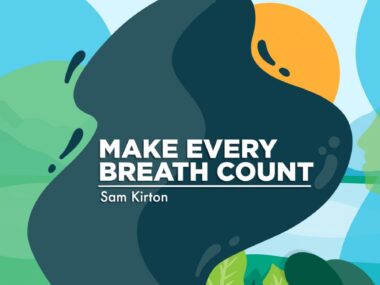Appreciating Other Perspectives on the IPF Journey
Written by |

This time a year ago was very different for my wife, Susan, and me. My idiopathic pulmonary fibrosis (IPF) was no longer stable, but progressing. Susan was confident I wouldn’t make it to Christmas.
Upon exertion, I needed over 7 liters per minute (lpm) of supplemental oxygen. Exertion for me was redefined as any activity, not just exercise. A 10-lpm home concentrator was prescribed to replace the 5-lpm concentrator. Simply climbing the stairs to go to bed at night was exhausting.
The path and timeline of my IPF journey certainly wasn’t predictable.
All those numbers
Thanks to my donor and their family, I received a bilateral lung transplant. I intend to continue beating the odds, which seem to be stacked against IPF patients.
From the moment of diagnosis, the IPF patient hears numbers concerning life expectancy, the percentage of people who qualify for a transplant, age limitations for transplant, and post-transplant survival rates. It is a lot of information for anyone to absorb.
Many of the numbers that patients hear are based on older data that haven’t been revised, or have only recently begun to be revised. The first statistic I recall hearing was the three-to-five-year life expectancy following an IPF diagnosis. According to the Pulmonary Fibrosis Foundation, those numbers are somewhat dated, as many PF patients live longer due to earlier diagnosis and better treatment options.
For example, the antifibrotic treatments Esbriet (pirfenidone) and Ofev (nintedanib) were approved in the U.S. in 2014, based on clinical trials that indicated they could slow IPF progression.
Post-transplant survival rates continue to trend upward. The Organ Procurement and Transplantation Network (OPTN) allows you to view transplant center-specific data and provides demographic data about donors. You should note that donor data are nonattributive. Additionally, organizations such as the Scientific Registry of Transplant Recipients (SRTR) provide some similar data as well as performance comparisons between transplant centers.
Know your data source
I follow several social media groups related to pulmonary fibrosis and lung transplant, and see a variety of opinions offered on many of the metrics cited above. I am confident that those sharing their personal stories have no intent to misinform or mislead.
Social media platforms represent a global community, and it can be difficult to discern where other users are located or what the source of their data is without asking. All the metrics I’ve cited are based on U.S. data.
I often hear people say that Esbriet has been available to IPF patients since 2014. Some are surprised when I add “in the U.S.” to the end of their statement. By way of comparison, Esbriet has been available in the European Union since 2011.
The same can be true for any of the metrics we associate with IPF. The OPTN and SRTR sites represent U.S. data. For a global perspective, you might consider researching information shared by the International Society for Heart and Lung Transplantation.
Seek to clarify
It’s easy to infer that another person’s data are wrong if you believe your data are correct. Asking for clarification should be acceptable. How you ask will set the tone for the exchange. Take any response as a sincere effort to clarify their data.
The internet is a global pathway to many different languages, cultures, and forms of expression. Keep that in mind as you review someone else’s thoughts and beliefs. We won’t all have the same experiences on our individual journeys. We won’t even receive the same medical advice.
Individually, we can seek to clarify to better understand others’ experiences. Multiple views can be correct, and if we can learn from each other, it will make every breath count.
Note: Pulmonary Fibrosis News is strictly a news and information website about the disease. It does not provide medical advice, diagnosis, or treatment. This content is not intended to be a substitute for professional medical advice, diagnosis, or treatment. Always seek the advice of your physician or other qualified health provider with any questions you may have regarding a medical condition. Never disregard professional medical advice or delay in seeking it because of something you have read on this website. The opinions expressed in this column are not those of Pulmonary Fibrosis News or its parent company, Bionews, and are intended to spark discussion about issues pertaining to pulmonary fibrosis.







NORBERT MEEHAN
I have been on Esbriet treatment for about two years . According to my doctor my condition remains about the same as when diagnosed two years ago . I use two liters ofO2. Some days I feel better than others but at 82 years old that can be expected. I try my best to maintain a positive attitude and not dwell on my medical issues.
Samuel Kirton
Norbert,
Thanks for reading my column. I applaud you for keeping a positive attitude and not dwelling on medical issues. In my case that made a real difference for me. I hope you continue to remain stable and enjoy a good quality of life.
Sam...